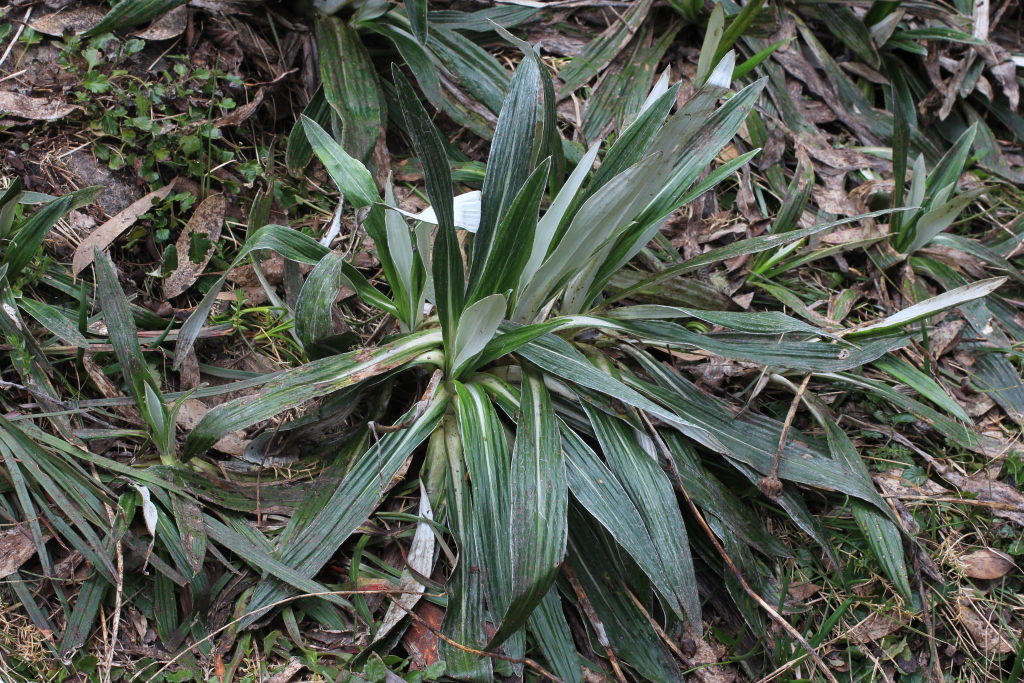Celmisia tomentella
M.Gray & GivenRhizomes thin, spreading, scaly, sometimes (in Sphagnum mossbeds) extensive. Leaves oblanceolate to narrowly oblanceolate or linear, 5–20(–30) cm long, (1.5–)5–15(–25) mm wide, dark green to grey-green above, pellicle silvery, shining, tomentum beneath very short, dull, cream to greyish, hairs flattened (under high magnification), midrib usually raised and conspicuous, margins recurved or revolute. Scape woolly-tomentose, to 60 cm high; capitulum c. 6(–8) cm diam.; intermediate involucral bracts narrowly triangular to narrowly triangular-subulate, c. 9–18 mm long, 1.7–3.3 mm wide, tomentose to woolly-tomentose or glabrescent at least in the lower third, usually reddish-purple distally, margins more or less fimbriate; ligules c. 10–25 mm long, white, sometimes mauve-tipped beneath. Cypselas c.(5–)10–11(–13) mm long, with short antrorsely appressed hairs, occasionally subglabrous; pappus c. 7–12 mm long. Flowers Dec.–Feb. (usually slightly later than C. costiniana and C. pugioniformis).
VRiv, HSF, HNF, VAlp. Also NSW. Commonest in subalpine areas (Mt Buffalo and the Bogong High Plains, south to the Baw Baw Plateau) in woodland, heath and Sphagnum mossbeds, usually in scattered colonies. Also in lower alpine and upper montane bogs.
The thin scaly rhizomes are diagnostic for this species in Victoria, however they are fleshy and brittle when fresh and readily detach unless specimens are carefully dug up. The leaves of this species are extremely variable in shape and size. Large plants from upper montane Sphagnum bogs may have leaves to 30 cm long and 2.5 cm wide. Plants from the Baw Baw Plateau have a silvery aspect and superficially resemble the closely related rhizomatous C. asteliifolia Hook. f. from Tasmania.
Gray, M.; Given, D. (1999). Celmisia. In: Walsh, N.G.; Entwisle, T.J., Flora of Victoria Vol. 4, Cornaceae to Asteraceae, pp. 912–916. Inkata Press, Melbourne.
 Spinning
Spinning
